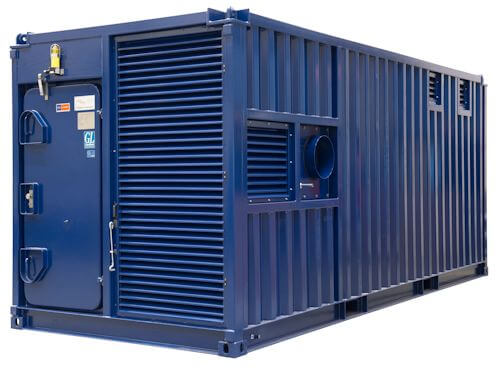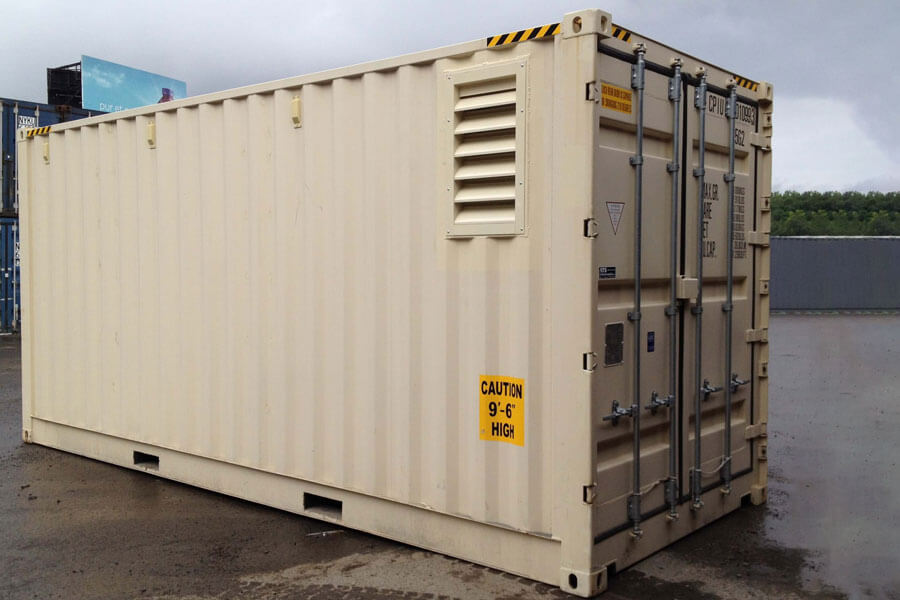What is Ventilated Container – A Complete Beginner’s Guide
Table of Contents
Thinking of shipping food items? Before you go on to choose the holder, do notice if the things you are shipping have moist content or not. Because if they have it in them, then the ventilated containers would be the most suitable option.
Ventilation in the Ventilated containers or coffee containers is given by ventilation openings in the top and lower side rails. The Ventilated containers are commonly used to move freight with a great moist content which requires ventilation through the transit to keep the Cargo from deteriorating.
The ordinary dry container is used to ship dry freight while the organic. Load like Coffee beans, Cocoa beans and so on is move in a ventilated vessel. For instance, the openings don’t allow in spray to prevent the freight by rain or shower.
So, what’s the difference?
Ventilated containers, barely vary from standard containers in appearance. The significant difference between the general dry cargo container and the ventilated container is that the ventilated containers have ventilation systems where available dry containers don’t have.
Also Read
| Open Top Container | Hard Top Container |
| Platform Container | Insulated Shipping |
| Flat Rack Container | Pallet Wide Containers |
| Intermediate Bulk Container | Reefer Container |
| Dry Container | Tank Container |
Construction
Let’s explore a little bit more and see how they designed. In a ventilated container, the ventilation given by openings in the holder’s rails’ base and topside. Such spaces made by shielding from the rain from outside to get in.
If you need active ventilation for your Cargo’s safe transit, you can go for ventilated containers with adjustable ventilation. You can use the “Porthole” containers, and also insulate or refrigerate them at the same time.
Special hardware expects to ensure that moisture kept from developing inside the container. There are two essential differences:
Natural Ventilation:
For air ventilation, containers with natural ventilation use pressure difference between the vessel’s interior and exterior air. Warm air ascends in the compartment and ways out at the top through the rooftop ventilation strips. Cooler outer air at that point makes its way into the container through the floor ventilation strips.
Forced Ventilation:
For the required air ventilation, forced ventilation containers use fans and air channels and ventilation flaps. Container vent spaces or air openings are regularly built like a maze to forestall the infiltration precipitation.
Frequently, there are openings in the base and top side rails, which form ordinary air ducts. Sometimes small perforated walls are introduced on the outer side.
VH Categories:
According to Code V of DIN EN ISO 6346, January 1996 list of ventilated containers, some distinctions are drawn, and they are either placed in code VH or type codes such as V0, V2 or V4. The containers divided into the containers with either.
Manual ventilation at the lower and upper parts
or
Automatic ventilation introduced inside the container
or
Automatic ventilation situated outside the container.
Lashing rings:
The upper side, lower side, and corner posts of ventilated containers have lashing rings to ensure freight safety. Lashing rings, with which the freight is secured introduced in the upper and lower side rails and the corner posts.
Lashing rings are usually installed in the upper and lower side rails and the corner posts to ensure Cargo’s safety. The lashing rings may take loads of up to 1,000 kg. The regular size for the ventilated container is 20′.

Why Do We Need a Ventilated Container?
Below, we have discussed the specifications regarding the ventilated containers to understand the container type in detail.
A shipping container is not just a metal box as its sounds and appears to be. Each container built to withstand the afflictions of transportation on the vast sea. They can deal with nearly anything that tossed at them including
- extraordinary climate
- cruel physical conditions
But still, you may question why exactly do we need them?
The design and development that makes the shipping container ideal for freight can also cause your cargo problems. For instance, if the humidity makes its way into the container, then it can’t leave, and its presence may damage your Cargo.
While shipping containers are worked with little pressure vents that permit the unit to let the airflow, they are not adequate to make practical ventilation inside the container, but ventilated containers keep the humidity outside.
Common Heights of Ventilated Container (add Chart as well)
Discuss these two specifically in detail
Ventilated container 40ft
Internal Dimensions:
| Length [mm] | Width [mm] | Height [mm] |
| 12192 | 2591 | 2438 |
Ventilated container of steel: 20′ long and 8’6″ high with corrugated walls and wooden floor
The lashing ring in a 20′ ventilated container can carry a load up to 1000kgs. The permissible weight measurements are mentioned on the container.
Weights:
| Maximum Gross weight [kg] | Maximum Payload [kg] | Tare Weight [kg] | Volume [m³] |
| 30480 | 28080 | 2400 | 33.0 |
| 30480 | 27990 | 2490 | 33.0 |
Door Openings:
| Width [mm] | Height [mm] |
| 2334 | 2290 |
| 2340 | 2292 |
Internal Dimensions:
| Length [mm] | Width [mm] | Height [mm] |
| 5888 | 2325 | 2392 |
| 5895 | 2321 | 2340 |
How you can Use Ventilated Container to Manage Cargo effectively

The Ventilated Container is utilized for freight which needs ventilation. The product, for example, Green Coffee beans which require ventilation during transit can be moved by Ventilated Containers; thus, the name of ventilated holders is otherwise called coffee containers.
Cocoa beans and other natural products with high moisture content can be responsible for the container’s products’ deterioration. As a result, it is necessary to guarantee that you have satisfactory ventilation.
Proper ventilation turns out to be much more significant if you are putting your containers in a climate where temperatures change definitely or shipping Cargo that is sensitive to temperature or humidity.
How to Guarantee Ventilation?
The easiest way to guarantee that your shipping container has the ventilation is to adjust your box with a rooftop top turbine vent, fixed louvre vent, or exhaust fan.
When to use?
Shipping containers have various applications and use. Moreover, depending upon the Cargo, each customer has multiple requirements for storing the Cargo they are shipping.
However, if you are thinking to transport any of the following things in your container, you might need to think about ventilation. Appropriate ventilation is required for shipping the household items, and ventilated containers prove to be the best choice; otherwise, the humidity can damage your stuff. Along with that, ventilated containers are also suitable to ship machinery, automobiles, chemicals and pressurized gases.






